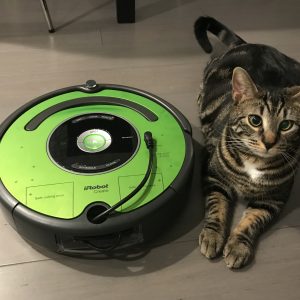by
Rob Tice

The Adaroombot Project
The Adaroombot project consists of an iRobot CreateⓇ 2 and Ada running on a Raspberry Pi with a Linux OS. This is a great Intro-to-Ada project as it focuses on a control algorithm and a simple serial communications protocol. The iRobot CreateⓇ 2 platform was originally design for STEM education and has great documentation and support - making it very easy to create a control application using Ada. This blog looks at the creation of the project and some cool features of Ada that were learned along the way.